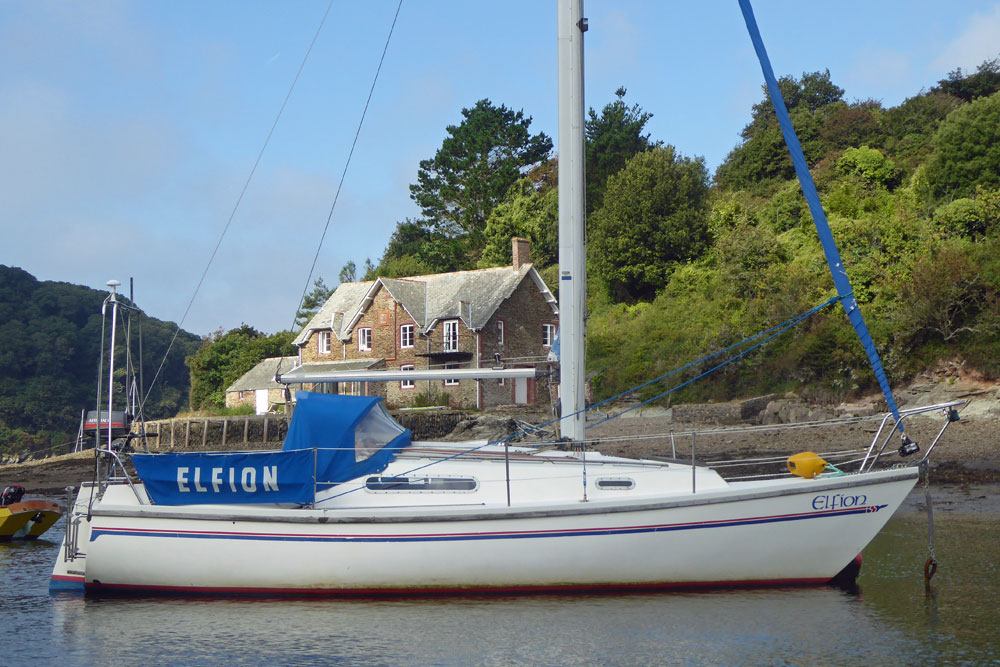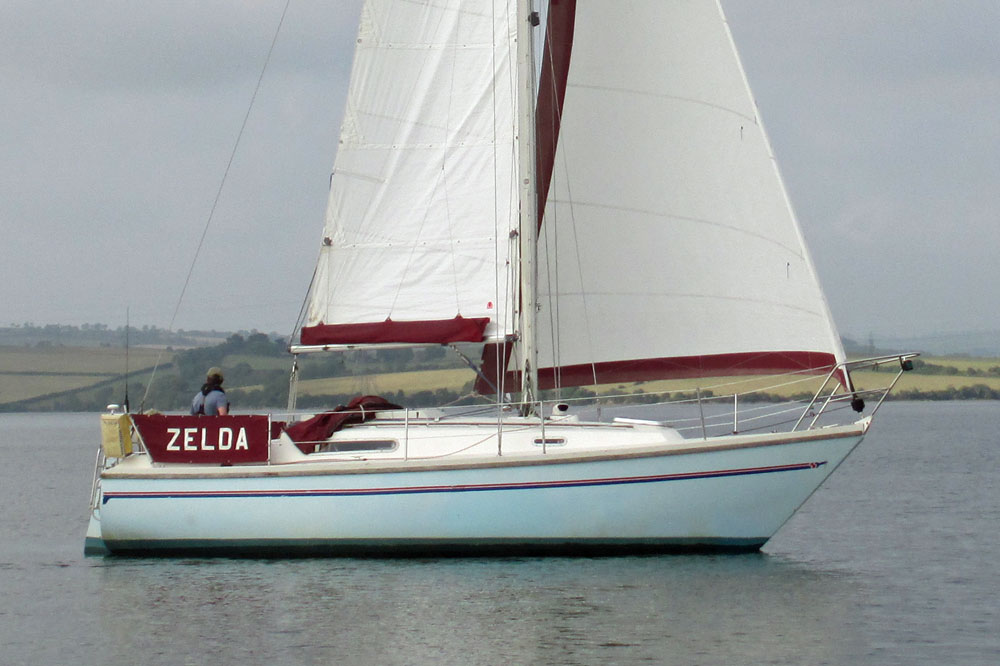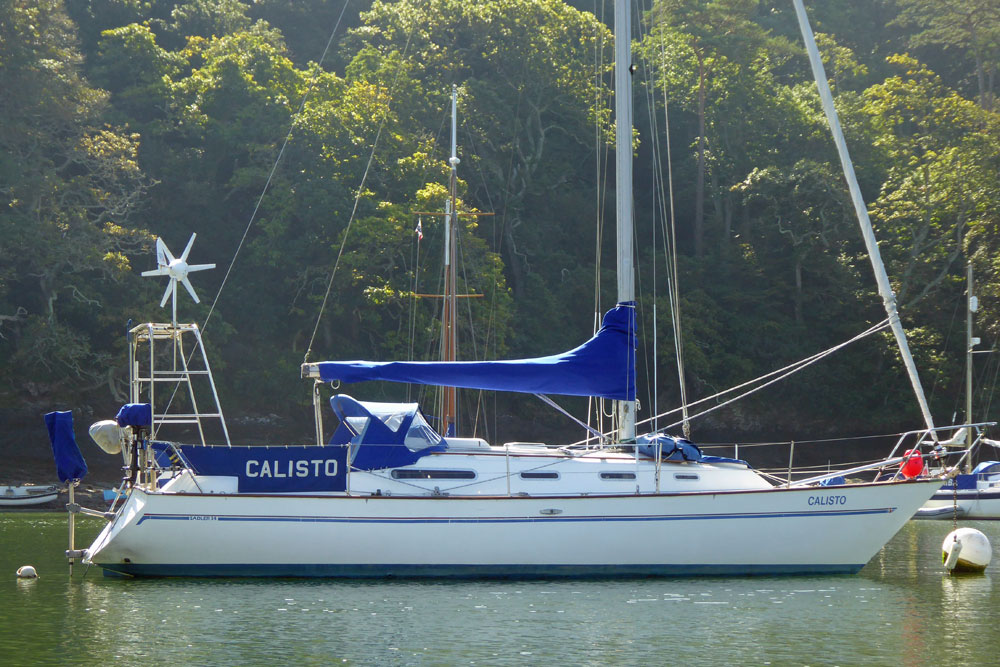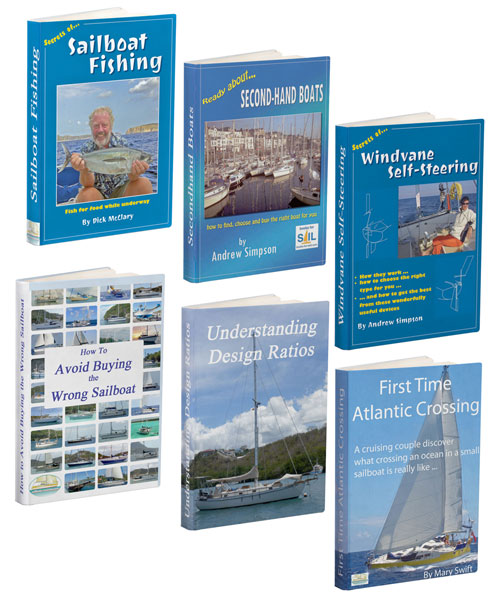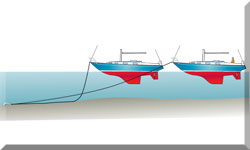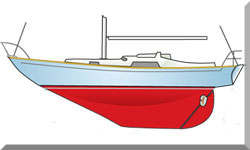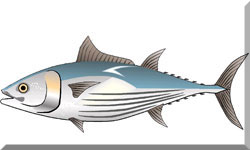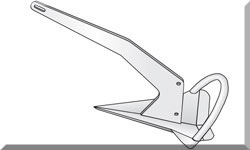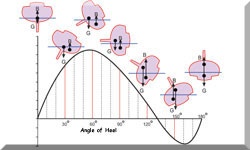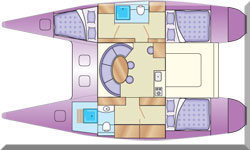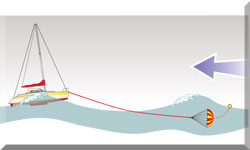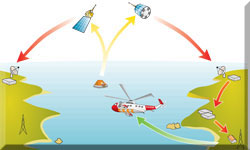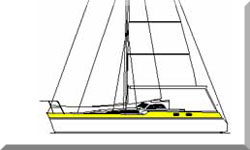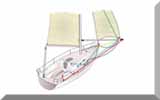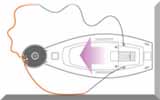- Home
- Cruiser Yachts under 30'
- Sadler 25
The Sadler 25 Sailboat
The Sadler 25, a masthead sloop, was designed by David Sadler and built in the UK by Sadler Yachts Ltd.
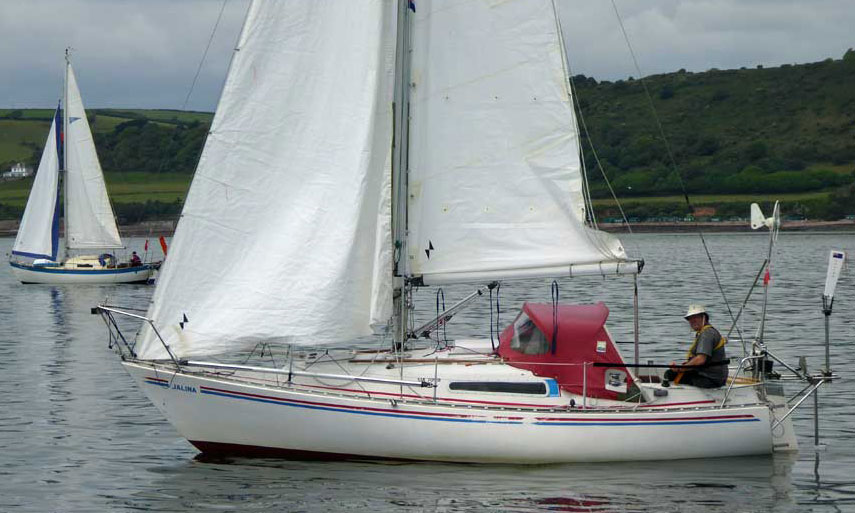 A Sadler 25 Mk II fitted with a windvane self-steering gear, although a trim tab system would probably have worked well on the transom-hung rudder
A Sadler 25 Mk II fitted with a windvane self-steering gear, although a trim tab system would probably have worked well on the transom-hung rudderPublished Specification for the Sadler 25 MkII
Underwater Configuration: Fin keel and transom-hung rudder
Hull Material: GRP (fibreglass)
Length Overall: 24' 4" / 7.4m
Waterline Length: 19' 2" / 5.8m
Beam: 8' 9" / 2.7m
Draft: 4' 8" / 1.4m
Rig Type: Masthead Sloop
Displacement: 4,000lb / 1,814kg
Designer: David Sadler
Builder: Sadler Yachts Ltd (UK)
Year First Built: 1974
Year Last Built: 1981
Published Design Ratios for the Sadler 25 MkII
1. Sail Area/Displacement Ratio: 18.5
2. Ballast/Displacement Ratio: 47.6
3. Displacement/Length Ratio: 240
4. Comfort Ratio: 16.6
5. Capsize Screening Formula: 2.2
Performance Predictions, Based on the Design Ratios
One way to evaluate the performance of a sailboat is to look at its design ratios, such as the sail area to displacement ratio (SA/D), the displacement to length ratio (D/L) and the ballast to displacement ratio (B/D). These ratios can give us an idea of how fast, light and stiff a boat is.
The SA/D ratio measures how much sail power a boat has relative to its weight. A higher SA/D ratio means a faster boat in light winds, but also a more tender boat in strong winds. The SA/D ratio of the Sadler 25 is about 18.5, which is quite high for a cruiser-racer of its size. This means that the Sadler 25 can accelerate quickly and reach good speeds in moderate winds.
The D/L ratio measures how heavy a boat is relative to its waterline length. A lower D/L ratio means a lighter boat that can plane easily and have less resistance in the water. The D/L ratio of the Sadler 25 is about 240, which is low for a cruiser-racer of its size. This means that the Sadler 25 is not very heavy and can glide smoothly through the water.
The B/D ratio measures how much ballast a boat has relative to its weight. A higher B/D ratio means a stiffer boat that can carry more sail and resist heeling. The B/D ratio of the Sadler 25 is about 47%, which is high for a cruiser-racer of its size. This means that the Sadler 25 has a lot of ballast and can stand up to strong winds.
Based on these ratios, we can predict that the Sadler 25 is a fast, light and stiff sailboat that can perform well in various wind conditions.
Production Period and Numbers Produced
The Sadler 25 was produced between 1974 and 1981 by Sadler Yachts Ltd., a British company founded by David Sadler and Martin Sadler. About 300 boats were built during this period, making the Sadler 25 one of the most popular small cruisers in the UK.
Alternative Versions & Options
The Sadler 25 was offered with four different keel options - deep fin, shallow fin, bilge keel or centre plate:
- The deep fin version had a draft of 1.42 m (4 ft 8 in), while the shallow fin version had a draft of 1.16 m (3 ft 10 in).
- The bilge keel version had two smaller keels on each side of the hull, with a draft of 0.99 m (3 ft 3 in).
- The centre plate version had a retractable keel that could be lowered or raised by a winch, with a draft range of 0.7 m to 1.5 m (2 ft 3 in to 4 ft 6 in).
The different keel options gave the owners more flexibility in choosing their sailing grounds and mooring places.
The Sadler 25 was also offered with two different rig options - standard or tall:
- The standard rig had a mast height of about 9 m (29 ft), while the tall rig had a mast height of about 10 m (33 ft).
- The tall rig gave the boat more sail area and better performance in light winds.
Number & Location of Sleeping Berths
The Sadler 25 had four or five sleeping berths depending on the interior layout. There was a V-berth in the forward cabin, which could sleep two people. There was a quarter berth on the starboard side of the main cabin, which could sleep one person. There was a settee berth on the port side of the main cabin, which could sleep one person. Some boats had another settee berth on the starboard side of the main cabin, which could sleep one more person.
History of the Boatbuilder
Sadler Yachts Ltd. was founded in 1972 by David Sadler and Martin Sadler, two brothers who shared a passion for sailing and boat design. David Sadler was a naval architect who had previously worked for Jeremy Rogers, the builder of the Contessa 26 and 32. Martin Sadler was a businessman who had experience in marketing and management. Together, they started their own company to produce their own designs.
The first boat they built was the Sadler 25, which was based on David Sadler's earlier design of the Contessa 26. The Sadler 25 was an instant success, winning many races and attracting many customers. The Sadler 25 was followed by other models, such as the Sadler 29, the Sadler 32, the Sadler 34 and the Starlight 35. The company also introduced a new feature in their boats: the polyurethane foam construction, which made them unsinkable.
Sadler Yachts Ltd. became one of the leading boatbuilders in the UK, producing over 2,000 boats in total. However, in the late 1980s, the company faced financial difficulties due to the recession and competition from other boatbuilders. In 1988, the company was sold to another British company, Bowman Yachts Ltd., which continued to produce some of the Sadler models until 1994.
In 1995, Mike Lucas, a former employee of Sadler Yachts Ltd., bought the moulds and rights to some of the Sadler models and started his own company, Lucas Yachting. Lucas Yachting still offers brokerage, maintenance and refurbishment services for Sadler owners today.
Secondhand Values
The Sadler 25 is a classic boat that has retained its value well over the years. According to Lucas Yachting, a good condition Sadler 25 can sell for between £8,000 and £12,000 (about $11,000 and $16,500) depending on the year, keel option, rig option and equipment level. A project boat that needs some work can sell for as low as £3,000 (about $4,100).
This article was written with the assistance of Gemini, a large language model developed by Google. Gemini was used to gather information, summarize research findings, and provide suggestions for the content and structure of the article.
Other sailboats in the Sadler range include:
Recent Articles
-
Modern Boat Electronics and the Latest Marine Instruments
Dec 20, 25 05:27 PM
Should sailboat instruments be linked to the latest boat electronics as a fully integrated system, or is it best to leave them as independent units? -
Hans Christian 43: Classic Bluewater Cruiser & Liveaboard Sailboat
Dec 10, 25 04:37 AM
Explore the Hans Christian 43: a legendary heavy-displacement, long-keel sailboat. Read our in-depth review of its specs, design ratios, and suitability for offshore cruising and living aboard. -
Planning Your Sailboat Liveaboard Lifestyle: An Ocean Sailor's Guide
Dec 06, 25 05:18 AM
Seasoned sailors share their methodical risk analysis for planning a secure Sailboat Liveaboard Lifestyle, covering financial, property, and relationship risks.
